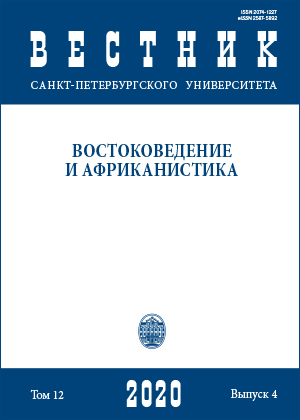The Motif of Journey in Kunwar Narain’s Poetry
DOI:
https://doi.org/10.21638/spbu13.2020.404Abstract
The article is focused on the motif of a journey in the works of a modern Indian poet, Kunwar Narain, a representative of New Hindi poetry. This motif of a journey is extremely important in Indology studies. Starting with the Indian epic poems “Mahabharata” and “Ramayana”, the motif of pilgrimage has been one of the significant plot lines. During the Medieval period, the motif of a journey became an allegory of individuality cognition. In modern Hindi literature writers introduce innovation in the image of travel, remaining within the established Indian tradition. The research in this article is based on the bilingual collection of poems by Kunwar Narain “No other world”. The article argues that a journey becomes the leitmotif in the poet’s lyrics. As a result, the Indian poet writes a kind of a travel literature, which is based on the image of the way with two semantic motives: a journey as a hero’s movement in space and a hero’s search for his essence, including a peculiar path as an allegory of his spiritual formation. The article focuses on the compositional distribution of poems in the “Journey” section of the book. This distribution expresses the movement of the author’s thoughts. The analysis of the literary techniques, symbolic images and allusions was conducted in the frames of not only Indian literature, but also American poet Walt Whitman’s creations, which had a great influence on Kunwar Narain’s lyrics. Literary influences are identified that contributed to the formation of the Indian poet’s worldview.
Keywords:
Kunwar Narain, New Hindi poetry, the motif of journey
Downloads
References
Downloads
Published
How to Cite
Issue
Section
License
Articles of "Vestnik of Saint Petersburg University. Asian and African Studies" are open access distributed under the terms of the License Agreement with Saint Petersburg State University, which permits to the authors unrestricted distribution and self-archiving free of charge.





